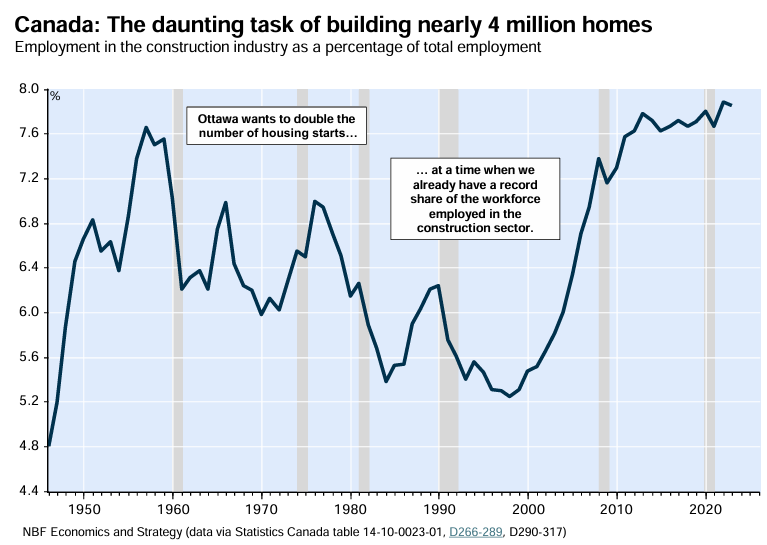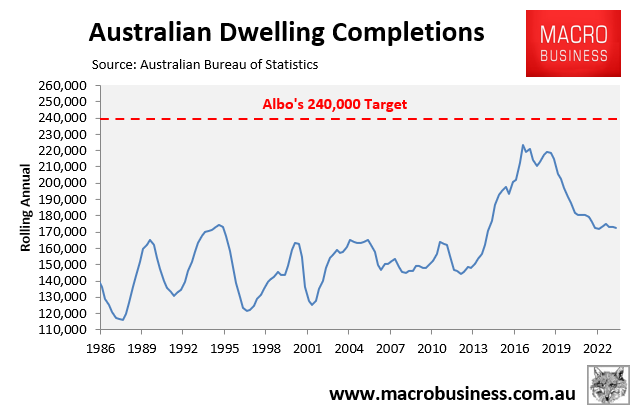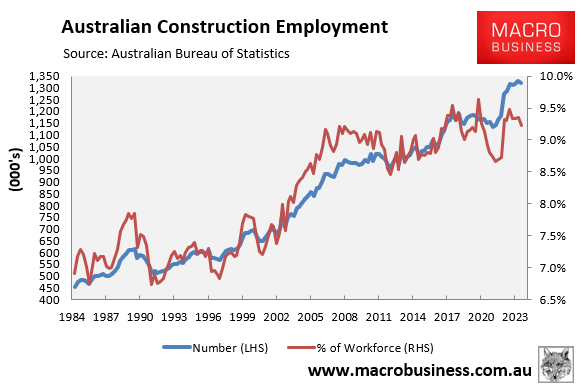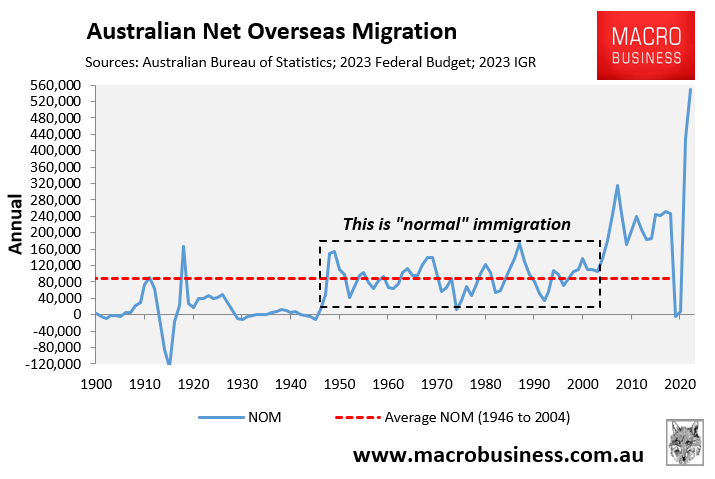The National Bank of Canada has derided the government’s mythical plan to build 3.87 million new homes by 2031.
This target would require an average annual run rate of 550,000 housing starts per year, about double the record high of 270,000 units in 2021.
National Bank of Canada notes, “we’re also going to need people to construct the other infrastructure that comes with almost 4 million housing units (roads, sewers, hospitals, schools, etc.)”.
“In the end, that means a lot more construction workers than we have now. That’s going to be a VERY tall order, because as today’s Hot Chart shows, we already have almost 8% of the workforce employed in construction, more than at any time since 1946”.
“As an economist, our job is to maximize an outcome under a set of constraints. We’re not sure Ottawa has properly assessed the labour constraints of building a record number of homes by 2031”.

Similar forces are in Australia, where the Albanese government has promised to build 1.2 million homes over five years.
This 240,000 annual cadence is higher than anything that Australia has ever built before:

According to the OECD, Australia has one of the highest concentrations of construction workers in the world:

As shown above, 5.2% of Australia’s population works in construction, according to the OECD (based on their latest surveyed observation), versus 3.3% across the OECD as a whole.
Moreover, ABS employment statistics show that 9.2% of Australian workers were employed in construction in February 2024, a historical high:

People build homes, and to build more homes, we will need a larger number of people working in construction—not just to build those homes but also the corresponding infrastructure.
Which sectors shall we take workers from to lift construction employment levels?
Let’s also not forget that home builders compete for labour against state government ‘Big Build’ infrastructure projects, worsening the supply issue.
We should also recognise that construction costs have also surged by 30% to 40% over the pandemic, curbing demand and supply:

Then there are Australia’s globally high interest rates, which are also dampening demand and supply:


In short, Australia will never build enough homes to meet its rapidly growing population.
The solution is to dramatically lower net overseas migration to a level below the nation’s ability to build homes and infrastructure.


